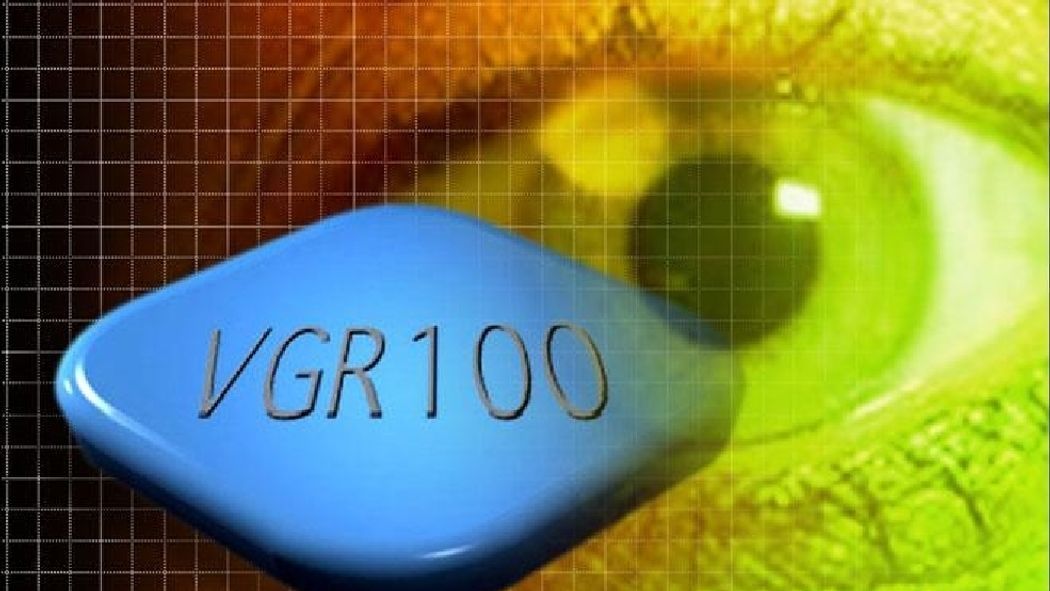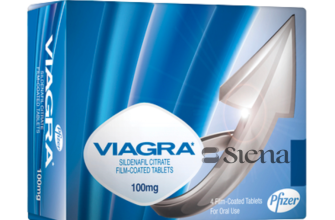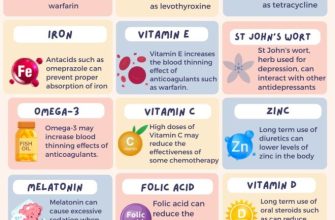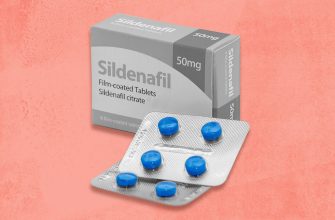Need to know if Viagra can cause blindness? Rare, but it’s a real possibility. Specifically, non-arteritic anterior ischemic optic neuropathy (NAION) is a potential side effect. This condition affects blood supply to the optic nerve, leading to vision loss, sometimes permanent.
Risk factors include pre-existing eye conditions like glaucoma and high blood pressure. Men over 50 are statistically more susceptible. Certain underlying health issues, such as diabetes, also increase the likelihood. Therefore, open communication with your doctor about your medical history before starting Viagra is paramount. A thorough eye exam can help assess your individual risk profile.
Act proactively: Report any sudden vision changes, such as blurry vision or loss of sight, immediately to your physician. Early intervention is key to managing NAION and minimizing potential long-term consequences. This includes prompt cessation of Viagra use pending medical evaluation. Don’t hesitate; your vision is worth protecting.
Remember, this information isn’t a substitute for professional medical advice. Always consult your doctor or ophthalmologist for personalized guidance. They can help determine if Viagra is safe for you and address any concerns about potential side effects.
- Viagra Blindness: A Comprehensive Overview
- What is NAION and its Connection to Viagra?
- Risk Factors for NAION Beyond Viagra Use.
- Underlying Health Conditions and Lifestyle Factors
- Symptoms of NAION: Recognizing the Warning Signs.
- How Viagra May Contribute to NAION Development.
- Diagnosis and Treatment Options for NAION
- Preventing NAION: Lifestyle and Medication Considerations
- Managing Underlying Health Conditions
- Medication Review
- Specific Medications to Discuss with your Doctor
- Protecting Your Eyes
- Long-Term Effects and Vision Recovery from NAION
- Factors Influencing Recovery
- Improving Chances of Recovery
- Seeking Medical Attention: When to Consult a Doctor.
- Specific Visual Symptoms Requiring Immediate Attention
- Beyond Visual Symptoms: When to Seek Help
Viagra Blindness: A Comprehensive Overview
Seek immediate medical attention if you experience sudden vision loss after taking Viagra or similar medications. This is a serious condition requiring prompt diagnosis and treatment.
Viagra (sildenafil) and similar medications, known as phosphodiesterase-5 (PDE5) inhibitors, can rarely cause a condition called Non-arteritic anterior ischemic optic neuropathy (NAION). NAION is a sudden reduction in blood flow to the optic nerve, leading to vision loss. This is more likely in individuals already at risk, such as those with pre-existing eye conditions like glaucoma or high blood pressure.
The exact mechanism isn’t fully understood, but it’s believed the medication’s effects on blood vessels might play a role. The risk appears higher with higher doses of Viagra.
Symptoms of NAION can include sudden vision loss, often affecting one eye more than the other. Blurred vision or a darkened visual field are also possible.
| Risk Factor | Description |
|---|---|
| Age | Older men are at higher risk. |
| Pre-existing eye conditions | Glaucoma, high blood pressure, diabetes, high cholesterol increase the risk. |
| Heart disease | Conditions affecting blood flow increase the likelihood. |
| Smoking | Damages blood vessels, increasing risk. |
Before starting Viagra or similar medications, discuss your complete medical history, including any eye conditions, with your doctor. Regular eye exams are advisable, especially if you have risk factors.
While rare, Viagra-associated vision loss is a serious complication. Early intervention can improve the chances of recovery or minimize further vision damage. Always prioritize your health and consult your physician immediately if you have concerns.
What is NAION and its Connection to Viagra?
NAION, or non-arteritic anterior ischemic optic neuropathy, is a condition causing sudden vision loss. It happens when the blood supply to the optic nerve is interrupted, leading to nerve damage. This damage can cause permanent vision loss in some cases.
Viagra, a medication for erectile dysfunction, can increase the risk of NAION, particularly in individuals already at risk. This risk is believed to be linked to Viagra’s effect on blood pressure and blood flow. Men with certain pre-existing conditions, such as high blood pressure, diabetes, and heart disease, might experience a heightened vulnerability.
Specific risk factors include age (over 50), high blood pressure, high cholesterol, and a history of cardiovascular problems. Using Viagra alongside other medications affecting blood pressure or blood flow compounds the risk further.
It’s crucial to discuss any pre-existing health conditions with your doctor before using Viagra. Open communication ensures your doctor can assess your risk and determine the suitability of this medication. A thorough medical history and physical examination are vital before starting Viagra or similar drugs.
If you experience sudden vision loss after taking Viagra, seek immediate medical attention. Prompt diagnosis and treatment may help mitigate the damage. Remember, early intervention is key.
Risk Factors for NAION Beyond Viagra Use.
Non-arteritic anterior ischemic optic neuropathy (NAION) has multiple risk factors besides phosphodiesterase-5 (PDE5) inhibitor use like Viagra. Age, being over 50, significantly increases your risk. High blood pressure, even if well-managed, remains a contributing factor. Diabetes, particularly poorly controlled diabetes, increases your likelihood of developing NAION. Similarly, high cholesterol and cardiovascular disease elevate your risk profile.
Underlying Health Conditions and Lifestyle Factors
Conditions like glaucoma and sleep apnea are associated with a heightened risk of NAION. Smoking drastically increases your chances. Obesity also plays a significant role, contributing to cardiovascular problems that indirectly affect optic nerve blood supply. A family history of NAION indicates a higher genetic predisposition. Regular physical exercise and maintaining a healthy weight are key preventative measures.
Regular eye examinations are vital for early detection, particularly if you have risk factors. Prompt diagnosis and treatment are essential to minimize potential vision loss. Consult your ophthalmologist to discuss these risks and determine appropriate preventative strategies based on your individual health profile.
Symptoms of NAION: Recognizing the Warning Signs.
Seek immediate medical attention if you experience sudden vision loss, even if it’s only in one eye. This could be a critical symptom.
Noticeable blurring or loss of sharpness in your vision, particularly in one eye, requires prompt evaluation. Don’t delay.
A sudden appearance of a dark or blurry spot in your visual field warrants a trip to the doctor. This could signal a serious problem.
Difficulty distinguishing colors, especially shades of red or green, is a potential sign. Report this change immediately.
Painless vision loss distinguishes NAION from other eye conditions causing vision problems. The absence of pain doesn’t diminish the urgency.
Experiencing these symptoms after taking Viagra or similar medications needs immediate medical attention. Connect the medication use with your symptoms when discussing this with your doctor.
Remember, early diagnosis and treatment greatly improves the chances of retaining some vision. Act quickly.
How Viagra May Contribute to NAION Development.
Viagra, or sildenafil, increases blood flow throughout the body, including the optic nerve. This increased blood flow can sometimes be problematic for individuals already predisposed to Non-arteritic anterior ischemic optic neuropathy (NAION). The optic nerve’s blood supply may be compromised in these individuals, making it more vulnerable to sudden pressure increases.
Specifically, Viagra’s vasodilatory effect might overwhelm the already fragile blood vessels supplying the optic nerve in susceptible patients. This leads to reduced blood flow and oxygen to the nerve, resulting in cell death and vision loss characteristic of NAION.
Risk factors for NAION include age (over 50), high blood pressure, diabetes, high cholesterol, and existing cardiovascular disease. Men with these pre-existing conditions should discuss the risks of Viagra use with their doctors before starting treatment. A thorough ophthalmological examination may be beneficial to assess the patient’s risk profile.
It’s crucial to understand that Viagra doesn’t cause NAION in everyone. However, the increased blood flow it produces increases the risk, particularly in those already at higher risk for NAION. Open communication with your healthcare provider is key to minimizing potential risks.
Individuals experiencing sudden vision loss after taking Viagra should seek immediate medical attention. Prompt diagnosis and treatment are vital to preserving vision.
Diagnosis and Treatment Options for NAION
Suspect NAION? Immediate ophthalmological evaluation is crucial. Your doctor will perform a thorough eye exam, including visual acuity tests, visual field testing, and ophthalmoscopy to assess optic nerve damage.
Imaging plays a key role. Optical coherence tomography (OCT) provides detailed images of the optic nerve head, helping doctors assess nerve fiber layer thickness and identify areas of damage. Fluorescein angiography can reveal blood vessel abnormalities.
Treatment focuses on mitigating further damage and supporting nerve recovery. Unfortunately, there’s no cure, but some interventions can help. Early treatment with high-dose intravenous corticosteroids might offer some benefit, though studies show mixed results. This treatment must be considered promptly, within a few weeks of symptom onset.
Lifestyle adjustments are also important. Controlling blood pressure, managing diabetes, and quitting smoking reduce the risk of future episodes. Regular eye examinations are essential for early detection of any recurrence or new problems.
Beyond medication and lifestyle changes, some patients may benefit from rehabilitation therapies like low-vision aids or visual retraining. These therapies aim to maximize remaining vision and improve daily function.
Remember, individual responses vary. Close collaboration with your ophthalmologist will ensure you receive the most appropriate care and support for your specific situation. Open communication about your symptoms and concerns is key to successful management of NAION.
Preventing NAION: Lifestyle and Medication Considerations
Maintain a healthy blood pressure. High blood pressure increases your risk of NAION. Regular monitoring and medication management, as directed by your doctor, are vital.
Managing Underlying Health Conditions
- Diabetes: Control your blood sugar levels through diet, exercise, and medication. Strict management significantly reduces NAION risk.
- High Cholesterol: Lower your cholesterol through diet and medication as prescribed. This improves blood flow throughout your body, including your optic nerve.
- Heart Disease: Address any underlying heart conditions aggressively. Good cardiovascular health is directly linked to eye health.
Quit smoking. Smoking constricts blood vessels, increasing NAION risk. Cessation programs and support groups can greatly assist.
Adopt a healthy lifestyle. Regular exercise, a balanced diet rich in fruits and vegetables, and maintaining a healthy weight improve overall circulation and reduce risk factors.
Medication Review
- Discuss all medications with your doctor, including over-the-counter drugs. Some medications can affect blood flow and increase NAION risk.
- Be open and honest about your medical history. Providing complete information allows your doctor to make informed decisions regarding your treatment plan.
- Regularly schedule check-ups. Early detection of potential issues is key to preventing serious complications.
Specific Medications to Discuss with your Doctor
Certain medications, including some used to treat erectile dysfunction and high blood pressure, have been linked to an increased risk of NAION. Open communication with your physician is paramount to managing this risk.
Protecting Your Eyes
Maintain good eye health. Regular eye exams help detect early signs of any problems. Prompt treatment is crucial for optimal vision preservation.
Long-Term Effects and Vision Recovery from NAION
Complete vision recovery after NAION isn’t guaranteed. The extent of vision loss varies significantly, depending on the severity of the optic nerve damage.
Factors Influencing Recovery
- Severity of initial vision loss: Greater initial vision loss correlates with a lower chance of complete recovery.
- Age: Older individuals tend to experience slower or less complete recovery.
- Overall health: Underlying health conditions can impact the healing process.
- Prompt treatment: Early diagnosis and management can improve outcomes.
Some individuals regain a significant portion of their vision within weeks or months, while others experience persistent vision impairment. This impairment might manifest as:
- Blurred vision
- Loss of color vision
- Blind spots (scotomas)
- Reduced visual field
Specific recovery timelines are unpredictable. While many see improvement in the first few months, some continue to see gradual changes for up to a year or more. Regular monitoring by an ophthalmologist is crucial to track progress and address any complications.
Improving Chances of Recovery
- Follow your ophthalmologist’s recommendations: This might include medication, lifestyle adjustments, or further tests.
- Manage underlying health conditions: Control of high blood pressure, diabetes, and other conditions is vital for optimal healing.
- Maintain a healthy lifestyle: A balanced diet, regular exercise, and avoidance of smoking promote overall well-being and may indirectly benefit recovery.
- Engage in visual rehabilitation: Your doctor may recommend exercises or therapies to improve vision function.
Remember, seeking prompt medical attention is critical if you experience sudden vision loss. Early intervention offers the best chance for a positive outcome. Consult your doctor for personalized advice and guidance.
Seeking Medical Attention: When to Consult a Doctor.
Contact your doctor immediately if you experience sudden vision loss, blurred vision, or any changes in your vision after taking Viagra or similar medications. Don’t wait – prompt medical attention is crucial for preserving your eyesight.
Specific Visual Symptoms Requiring Immediate Attention
These include: sudden onset of blurred vision; loss of color vision; seeing flashing lights; having a curtain come down over your vision; experiencing eye pain or discomfort. Any of these symptoms warrant immediate medical evaluation, regardless of severity.
Beyond Visual Symptoms: When to Seek Help
Even if you don’t experience visual changes, seek medical advice if you have chest pain, prolonged erection lasting more than four hours (priapism), or severe headache following Viagra use. These can indicate serious health problems requiring immediate intervention.
Your physician can accurately assess your situation and provide appropriate medical management. Remember, proactive healthcare is paramount for your well-being.










